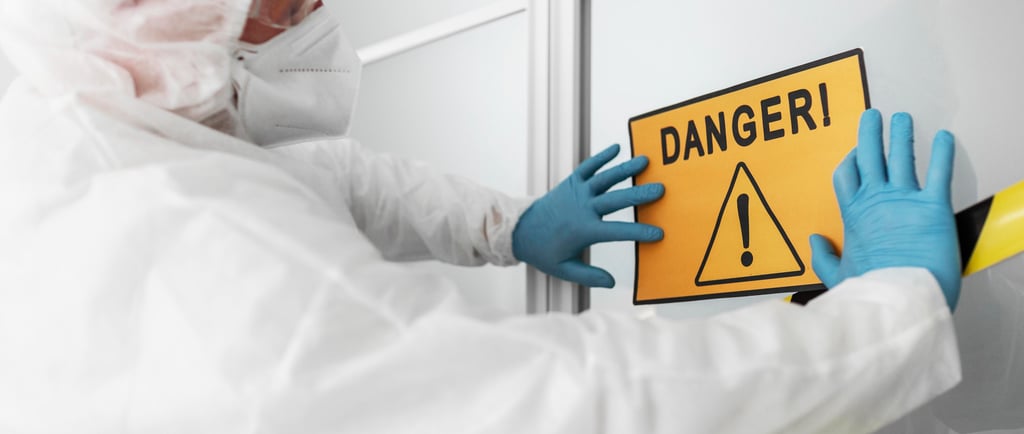5 Harmful Cosmetic Ingredients to Avoid
Rio Bondan Tissani
3/25/20252 min read


Cosmetics are an essential part of beauty routines, but not all products are safe for your skin and health. Some chemical ingredients in cosmetics can cause irritation, allergies, and even serious long-term health problems. Below are 5 harmful cosmetic ingredients to avoid, along with their potential effects and safer alternatives.
1. Paraben (Methylparaben, Propylparaben, Butylparaben)
Function: Preservatives that prevent bacterial and fungal growth in products.
Commonly found in: Foundation, moisturizers, shampoo, deodorants, and skincare products.
Why Are They Dangerous?
Endocrine disruptors - Parabens mimic estrogen, potentially increasing risks of breast cancer and reproductive disorders
Skin irritation - May cause contact dermatitis or allergic reactions in sensitive individuals.
Safer Alternatives:
Products labeled "paraben-free"
Natural preservatives like vitamin E (tocopherol) or essential oils (e.g., rosemary extract, tea tree oil)
2. Sulfat (SLS/SLES – Sodium Lauryl Sulfate/Sodium Laureth Sulfate)
Function: A surfactant that creates lather in soaps, shampoos, and facial cleansers.
Commonly found in: Face wash, shampoo, body wash, and toothpaste.
Why Is It Harmful?
Skin & eye irritation - Causes dryness, redness, and itching.
Strips natural oils - Compromises the skin barrier, increasing dehydration sensitivity.
1,4-dioxane contamination risk: A carcinogenic byproduct in SLES manufacturing.
Safer Alternatives:
Gentler surfactants:
Decyl glucoside (coconut-derived, pH-balanced)
Cocamidopropyl betaine (mild, foam-boosting)
3. Formaldehid & Pelepasan Formaldehid (Formaldehyde Releasers)
Function: A preservative used to extend product shelf life.
Commonly found in: Nail polish, eyelash glue, hair straightening treatments, and some shampoos.
Why Is It Dangerous?
Carcinogenic: Long-term formaldehyde exposure increases cancer risks (e.g., nasopharyngeal cancer).
Allergies & respiratory irritation: Causes:
✓ Skin burns
✓ Watery eyes
✓ Breathing difficulties (especially in salon workers).
Safer Alternatives:
Products labeled "Formaldehyde-free"
Grapefruit seed extract (natural antimicrobial) or Benzyl alcohol (BPOM-approved mild preservative)
4. Phthalates (DBP, DEHP, DEP)
Function: Plasticizers that increase product flexibility and prolong fragrance longevity.
Commonly found in: Perfumes, hairsprays, nail polish, and lotions.
Why Are They Dangerous?
Hormone disruption: Linked to early puberty, infertility, increased diabetes risk
Reproductive toxicity: Associated with fetal abnormalities in clinical studies.
Safer Alternatives:
"Phthalate-free"
Natural fragrance options: Essential oils (e.g., lavender, citrus)
5. Mercury (Hydrargyrum)
Function: Skin lightening agent and preservative in some beauty products.
Found in: Illegal whitening creams, fairness soaps, and black-market cosmetics.
Why Is It Dangerous?
Neurotoxin - Causes irreversible damage to brain function, kidney health and nervous system
Severe skin damage - Leads to increased sensitivity, chemical burns, paradoxical hyperpigmentation
How to Choose Safe Cosmetics
Decode Ingredient Lists - Avoid harmful ingredients like parabens, sulfates, formaldehyde, phthalates, and mercury.
Look for "Clean Beauty" Labels - Choose products marked "non-toxic", "paraben-free", or "SLS-free".
Verify Regulatory Approval - Check for BPOM (Indonesia) or FDA (US/EU) certification on packaging.
Patch Test First - Apply a small amount behind your ear or inner arm; wait 24 hours for reactions.
Prioritize Natural/Organic Options - Opt for food-grade ingredients (e.g., coconut oil, shea butter) when possible.
Cosmetics should enhance beauty—not compromise health. By avoiding toxic chemicals, you reduce risks of irritation, allergies, and long-term diseases. Stay vigilant, and invest in products that care for your skin and body!
Stay Connected with Us
Our Contact
+62 812-6007-8968 ( Cika )
Copyright © 2025 SCK Corp. All rights reserved.
Nova Casa Square No.8 Jl. Raya Serpong km 58, Serpong, South Tangerang City, Banten 15310, Indonesia
Address
+62 878-8285-8808 ( Wulan )
